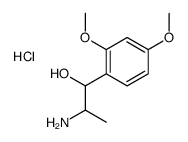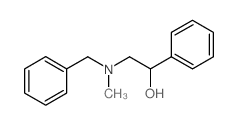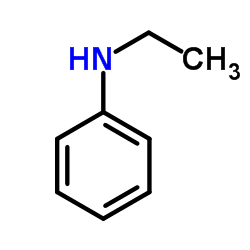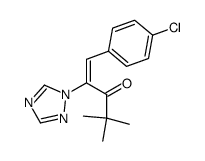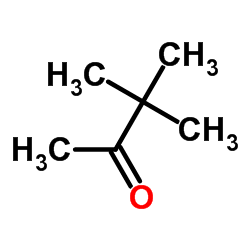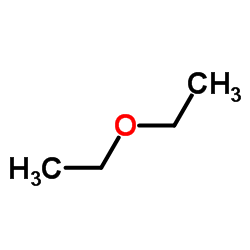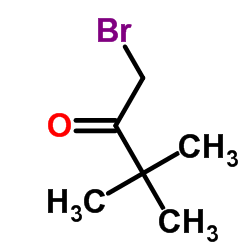83657-22-1
| 中文名 | 烯效唑 |
|---|---|
| 英文名 | uniconazole |
| 中文别名 |
高效唑
(E)-1-(4-氯苯基)-2-(1,2,4-三唑-1-基)-4,4-二甲基-1-戊烯-3-醇 特效唑 (E)-(RS)-1-(4-氯苯基)-4,4-二甲基-2-(1H-,2,4-三唑-1-基)戊-1-烯-3-醇 (E)-1-对氯苯基-2-(1,2,4-三唑-1-基)-4,4-二甲基-1-戊烯-3-醇 |
| 英文别名 |
Uniconazole
UNII:R4ATA06H50 (E)-(RS)-1-(4-Chlorophenyl)-4,4-dimethyl-2-(1H-1,2,4-triazol-1-yl)pent-1-en-3-ol UNICONAZOLE, CERTIFIED REFERENCE MATERIAL Prunit (1E)-1-(4-Chlorophenyl)-4,4-dimethyl-2-(1H-1,2,4-triazol-1-yl)-1-penten-3-ol s3307d (βE)-β-[(4-chlorophenyl)methylene]-α-(1,1-dimethylethyl)-1H-1,2,4-triazole-1-ethanol (1E)-1-(4-Chlorphenyl)-4,4-dimethyl-2-(1H-1,2,4-triazol-1-yl)pent-1-en-3-ol 1H-1,2,4-Triazole-1-ethanol, β-((4-chlorophenyl)methylene)-α-(1,1-dimethylethyl)-, (βE)- Sumagic s327d s3307 (1E)-1-(4-Chlorophenyl)-4,4-dimethyl-2-(1H-1,2,4-triazol-1-yl)pent-1-en-3-ol S-327 MFCD01678674 Majic s07 rac-(1E,3R)-1-(4-chlorophenyl)-4,4-dimethyl-2-(1H-1,2,4-triazol-1-yl)pent-1-en-3-ol (E)-b-[(4-Chlorophenyl)methylene]-a-(1,1-dimethylethyl)-1H-1,2,4-triazole-1-ethanol 1H-1,2,4-Triazole-1-ethanol, β-[(4-chlorophenyl)methylene]-α-(1,1-dimethylethyl)-, (βE)- xe1019 |
| 描述 | 烯效唑是一种植物生长调节剂,通过抑制细胞色素P450 707As(Ki=68nm)发挥作用,细胞色素P450 707As是分解脱落酸的酶家族,从而抑制赤霉素和甾醇的生物合成。 |
|---|---|
| 相关类别 |
| 密度 | 1.2±0.1 g/cm3 |
|---|---|
| 沸点 | 474.6±55.0 °C at 760 mmHg |
| 熔点 | 153ºC |
| 分子式 | C15H18ClN3O |
| 分子量 | 291.776 |
| 闪点 | 240.8±31.5 °C |
| 精确质量 | 291.113831 |
| PSA | 50.94000 |
| LogP | 3.84 |
| 外观性状 | 白色-淡棕色结晶 |
| 蒸汽压 | 0.0±1.2 mmHg at 25°C |
| 折射率 | 1.580 |
| 储存条件 | 0-6°C |
|
Section1. IDENTIFICATION OF THE SUBSTANCE/MIXTURE Product identifiers Product name: Uniconazole CAS-No.: 83657-22-1 Relevant identified uses of the substance or mixture and uses advised against Identified uses: Laboratory chemicals, Manufacture of substances Section2. HAZARDS IDENTIFICATION Classification of the substance or mixture Classification according to Regulation (EC) No 1272/2008 [EU-GHS/CLP] Acute toxicity, Oral (Category 4) Classification according to EU Directives 67/548/EEC or 1999/45/EC Harmful if swallowed. Label elements Labelling according Regulation (EC) No 1272/2008 [CLP] Pictogram Signal wordWarning Hazard statement(s) H302Harmful if swallowed. Precautionary statement(s) none Supplemental Hazardnone Statements According to European Directive 67/548/EEC as amended. Hazard symbol(s) R-phrase(s) R22Harmful if swallowed. S-phrase(s)none Other hazards - none Section3. COMPOSITION/INFORMATION ON INGREDIENTS Substances Formula: C15H18ClN3O Molecular Weight: 291,78 g/mol ComponentConcentration E-(+-)-beta-[(4-Chlorophenyl)methylene]-alpha-(1,1-dimethylethyl)-1H-1,2,4 CAS-No.83657-22-1- Section4. FIRST AID MEASURES Description of first aid measures General advice Consult a physician. Show this safety data sheet to the doctor in attendance. If inhaled If breathed in, move person into fresh air. If not breathing, give artificial respiration. Consult a physician. In case of skin contact Wash off with soap and plenty of water. Consult a physician. In case of eye contact Rinse thoroughly with plenty of water for at least 15 minutes and consult a physician. If swallowed Never give anything by mouth to an unconscious person. Rinse mouth with water. Consult a physician. Most important symptoms and effects, both acute and delayed To the best of our knowledge, the chemical, physical, and toxicological properties have not been thoroughly investigated. Indication of any immediate medical attention and special treatment needed no data available Section5. FIREFIGHTING MEASURES Extinguishing media Suitable extinguishing media Use water spray, alcohol-resistant foam, dry chemical or carbon dioxide. Special hazards arising from the substance or mixture Carbon oxides, nitrogen oxides (NOx), Hydrogen chloride gas Advice for firefighters Wear self contained breathing apparatus for fire fighting if necessary. Further information no data available Section6. ACCIDENTAL RELEASE MEASURES Personal precautions, protective equipment and emergency procedures Use personal protective equipment. Avoid dust formation. Avoid breathing vapors, mist or gas. Ensure adequate ventilation. Avoid breathing dust. Environmental precautions Prevent further leakage or spillage if safe to do so. Do not let product enter drains. Discharge into the environment must be avoided. Methods and materials for containment and cleaning up Pick up and arrange disposal without creating dust. Sweep up and shovel. Keep in suitable, closed containers for disposal. Reference to other sections For disposal see section 13. Section7. HANDLING AND STORAGE Precautions for safe handling Avoid contact with skin and eyes. Avoid formation of dust and aerosols. Provide appropriate exhaust ventilation at places where dust is formed. Conditions for safe storage, including any incompatibilities Store in cool place. Keep container tightly closed in a dry and well-ventilated place. Specific end uses no data available Section8. EXPOSURE CONTROLS/PERSONAL PROTECTION Control parameters Components with workplace control parameters Exposure controls Appropriate engineering controls Handle in accordance with good industrial hygiene and safety practice. Wash hands before breaks and at the end of workday. Personal protective equipment Eye/face protection Safety glasses with side-shields conforming to EN166 Use equipment for eye protection tested and approved under appropriate government standards such as NIOSH (US) or EN 166(EU). Skin protection Handle with gloves. Gloves must be inspected prior to use. Use proper glove removal technique (without touching glove's outer surface) to avoid skin contact with this product. Dispose of contaminated gloves after use in accordance with applicable laws and good laboratory practices. Wash and dry hands. The selected protective gloves have to satisfy the specifications of EU Directive 89/686/EEC and the standard EN 374 derived from it. Body Protection Complete suit protecting against chemicals, The type of protective equipment must be selected according to the concentration and amount of the dangerous substance at the specific workplace. Respiratory protection For nuisance exposures use type P95 (US) or type P1 (EU EN 143) particle respirator.For higher level protection use type OV/AG/P99 (US) or type ABEK-P2 (EU EN 143) respirator cartridges. Use respirators and components tested and approved under appropriate government standards such as NIOSH (US) or CEN (EU). Section9. PHYSICAL AND CHEMICAL PROPERTIES Information on basic physical and chemical properties a) AppearanceForm: crystalline Colour: white b) Odourodourless c) Odour Thresholdno data available d) pHno data available e) Melting point/freezing Melting point/freezing point: 147 - 164 °C point f) Initial boiling point and no data available boiling range g) Flash pointno data available h) Evaporation rateno data available i) Flammability (solid, gas) no data available j) Upper/lowerno data available flammability or explosive limits k) Vapour pressureno data available l) Vapour densityno data available m) Relative densityno data available n) Water solubility0,00841 g/l at 25 °C o) Partition coefficient: n- log Pow: 3,67 at 25 °C octanol/water p) Autoignitionno data available temperature q) Decompositionno data available temperature r) Viscosityno data available s) Explosive propertiesno data available t) Oxidizing propertiesno data available Other safety information Solubility in otherMethanol 88 g/l at 25 °C solvents Section10. STABILITY AND REACTIVITY Reactivity no data available Chemical stability no data available Possibility of hazardous reactions no data available Conditions to avoid no data available Incompatible materials Strong oxidizing agents Hazardous decomposition products Other decomposition products - no data available Section11. TOXICOLOGICAL INFORMATION Information on toxicological effects Acute toxicity LD50 Oral - rat - male - 2.020 mg/kg LD50 Oral - rat - female - 1.790 mg/kg Skin corrosion/irritation Skin - rat - No skin irritation Serious eye damage/eye irritation Eyes - rabbit - Mild eye irritation Respiratory or skin sensitization no data available Germ cell mutagenicity Genotoxicity in vitro - Not mutagenic in Ames Test. Carcinogenicity IARC:No component of this product present at levels greater than or equal to 0.1% is identified as probable, possible or confirmed human carcinogen by IARC. Reproductive toxicity no data available Specific target organ toxicity - single exposure no data available Specific target organ toxicity - repeated exposure no data available Aspiration hazard no data available Potential health effects Inhalation May be harmful if inhaled. May cause respiratory tract irritation. IngestionHarmful if swallowed. SkinMay be harmful if absorbed through skin. May cause skin irritation. EyesCauses eye irritation. Signs and Symptoms of Exposure To the best of our knowledge, the chemical, physical, and toxicological properties have not been thoroughly investigated. Additional Information RTECS: Not available Section12. ECOLOGICAL INFORMATION Toxicity Toxicity to fishLC50 - Oncorhynchus mykiss (rainbow trout) - 14,8 mg/l - 96 h LC50 - Cyprinus carpio (Carp) - 7,64 mg/l - 96 h Persistence and degradability no data available Bioaccumulative potential no data available Mobility in soil no data available Results of PBT and vPvB assessment no data available Other adverse effects Toxic to aquatic life. no data available Section13. DISPOSAL CONSIDERATIONS Waste treatment methods Product Offer surplus and non-recyclable solutions to a licensed disposal company. Dissolve or mix the material with a combustible solvent and burn in a chemical incinerator equipped with an afterburner and scrubber. Contaminated packaging Dispose of as unused product. Section14. TRANSPORT INFORMATION UN number ADR/RID: -IMDG: -IATA: - UN proper shipping name ADR/RID: Not dangerous goods IMDG: Not dangerous goods IATA:Not dangerous goods Transport hazard class(es) ADR/RID: -IMDG: -IATA: - Packaging group ADR/RID: -IMDG: -IATA: - Environmental hazards ADR/RID: noIMDG Marine pollutant: noIATA: no Special precautions for user no data available Section15. REGULATORY INFORMATION This safety datasheet complies with the requirements of Regulation (EC) No. 1907/2006. Safety, health and environmental regulations/legislation specific for the substance or mixture no data available Chemical Safety Assessment no data available Section16. OTHER INFORMATION Further information Copyright 2012 Co. LLC. License granted to make unlimited paper copies for internal use only. The above information is believed to be correct but does not purport to be all inclusive and shall be used only as a guide. The information in this document is based on the present state of our knowledge and is applicable to the product with regard to appropriate safety precautions. It does not represent any guarantee of the properties of the product. Corporation and its Affiliates shall not be held liable for any damage resulting from handling or from contact with the above product. See and/or the reverse side of invoice or packing slip for additional terms and conditions of sale. |
CHEMICAL IDENTIFICATION
HEALTH HAZARD DATAACUTE TOXICITY DATA
|
| 符号 |

GHS07 |
|---|---|
| 信号词 | Warning |
| 危害声明 | H302 |
| 危害码 (欧洲) | Xn |
| 风险声明 (欧洲) | 22 |
| 危险品运输编码 | NONH for all modes of transport |
| WGK德国 | 3.0 |
| 海关编码 | 3808939100 |
|
~% 
83657-22-1 |
| 文献:US4908455 A1, ; |
|
~% 
83657-22-1 |
| 文献:US4760149 A1, ; |
|
~% 
83657-22-1 |
| 文献:US4435203 A1, ; |
|
~% 
83657-22-1 |
| 文献:Bioorganic and Medicinal Chemistry Letters, , vol. 9, # 3 p. 425 - 430 |
|
~% 
83657-22-1 |
| 文献:Bioorganic and Medicinal Chemistry Letters, , vol. 9, # 3 p. 425 - 430 |
|
~% 
83657-22-1 |
| 文献:Bioorganic and Medicinal Chemistry Letters, , vol. 9, # 3 p. 425 - 430 |
|
~%
详细
|
| 文献:US4435203 A1, ; |
|
~% 
83657-22-1 |
| 文献:Bioorganic and Medicinal Chemistry Letters, , vol. 9, # 3 p. 425 - 430 |
| 上游产品 10 | |
|---|---|
| 下游产品 0 | |
| 海关编码 | 2933990019 |
|---|---|
| 中文概述 | 2933990019 多效唑,烯效唑,抑芽唑等〔包括异麦赛津,叶枯净,叶锈特,吡喃草酮,吲哚乙酸〕。监管条件:S(进出口农药登记证明)。增值税率:17.0%。退税率:9.0%。最低关税:6.5%。普通关税:20.0% |
| 申报要素 | 品名, 成分含量, 用途, 乌洛托品请注明外观, 6-己内酰胺请注明外观, 签约日期 |
| 监管条件 | S.进出口农药登记证明 |
| Summary | 2933990019 phenazine 5-oxide。supervision conditions:s(import or export registration certificate for pesticides)。VAT:17.0%。tax rebate rate:9.0%。MFN tarrif:6.5%。general tariff:20.0% |




